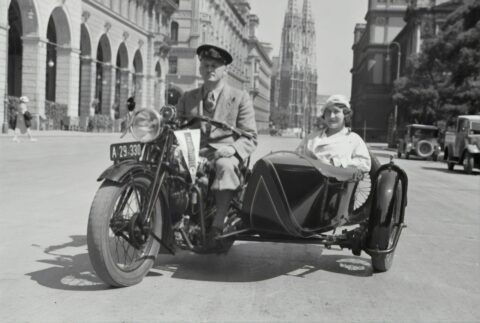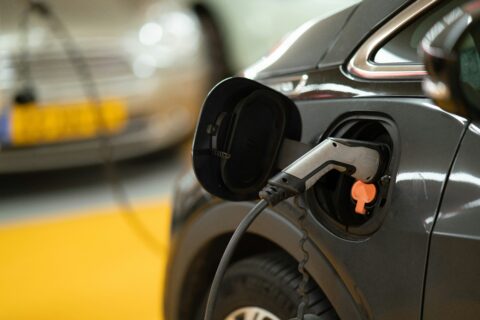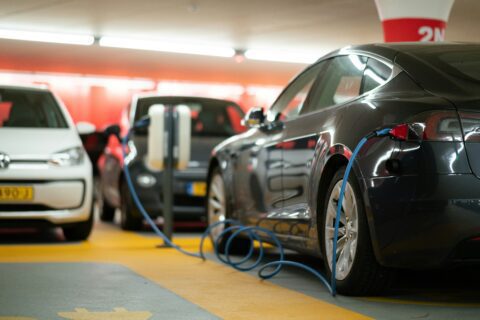Introduction: The current state of transportation and its challenges
Buckle up, because the future of transportation is about to take us on a wild ride! From electric vehicles to self-driving cars and even futuristic hyperloop technology, the way we travel is undergoing a revolution like never before. Let’s explore how cutting-edge advancements are transforming the way we move from point A to point B, shaping a world where speed, efficiency, and sustainability collide in exciting ways.
The Rise of Electric Vehicles
Electric vehicles (EVs) have been gaining traction in recent years as a sustainable alternative to traditional gasoline-powered cars. With advancements in battery technology, EVs now offer longer driving ranges and faster charging capabilities. Companies like Tesla have led the way in making EVs stylish and desirable, challenging the notion that eco-friendly vehicles can’t be sleek.
The rise of electric vehicles not only reduces carbon emissions but also decreases our dependence on fossil fuels. Governments around the world are incentivizing the adoption of EVs through subsidies and infrastructure development for charging stations. Electric cars are becoming more accessible to consumers with various models available at different price points.
As more automakers invest in electric vehicle production, we can expect to see a wider range of options for consumers looking to make the switch from traditional combustion engines. The future of transportation is undoubtedly electrifying!
Self-Driving Cars: Advancements and Controversies
Self-driving cars have been a hot topic in the transportation world, with advancements being made at a rapid pace. Companies like Tesla, Google, and Uber are leading the way in developing this groundbreaking technology. Imagine sitting back and letting your car take you to your destination without having to lift a finger – it’s like something out of a sci-fi movie!
However, along with the excitement comes controversy. Safety concerns have been raised regarding self-driving vehicles, especially after some high-profile accidents involving autonomous cars. Critics argue that these vehicles may not be as reliable or safe as human drivers, raising questions about liability and ethical considerations.
Despite the controversies, self-driving cars continue to evolve and improve. With ongoing research and development efforts, we can expect to see even more impressive advancements in the near future. Who knows? We might soon live in a world where self-driving cars are as common as smartphones!
Hyperloop Technology: A Faster and More Efficient Way to Travel
Imagine traveling from one city to another at speeds of up to 700 miles per hour in a pod inside a low-pressure tube. This is the concept behind Hyperloop technology, a revolutionary mode of transportation that aims to make long-distance travel faster and more efficient than ever before.
Hyperloop pods are designed to float above the track using magnetic levitation, reducing friction and allowing for incredibly high speeds. With minimal air resistance in the vacuum-like tube, these pods can reach velocities close to the speed of sound.
This innovative transportation system has the potential to significantly reduce travel times between major cities, making it possible for people to live further away from their workplaces while still enjoying fast commutes. Additionally, Hyperloop technology could help alleviate traffic congestion and reduce carbon emissions associated with traditional modes of transport.
While there are still challenges to overcome in terms of safety, regulatory approval, and infrastructure development, many see Hyperloop as a promising solution for future transportation needs. As advancements continue and trials progress around the world, we may soon witness a new era of high-speed travel that changes the way we move from place to place.
Drones in Transportation: Delivery and Surveillance
Drones have been making waves in the transportation industry, offering innovative solutions for both delivery services and surveillance purposes. These unmanned aerial vehicles are changing the way goods are transported from one place to another. With their ability to navigate through traffic and reach remote locations, drones have the potential to revolutionize last-mile delivery logistics.
In addition to delivery services, drones are also being used for surveillance and monitoring activities. Law enforcement agencies and security firms utilize drones to enhance their capabilities in keeping public spaces safe and secure. The aerial view provided by drones allows for better data collection and analysis, aiding in crime prevention and emergency response efforts.
As drone technology continues to advance, we can expect even more applications in transportation beyond what we currently imagine. The integration of drones into our daily lives is set to transform the way we perceive traditional modes of transportation.
The Impact on Public Transportation
As technology continues to advance, the impact on public transportation is becoming more evident.
With the integration of smart ticketing systems and real-time updates, commuters can now easily navigate their way through busy networks.
Electric buses are also gaining popularity in many cities, reducing emissions and noise pollution while providing a more sustainable option for mass transit.
Innovations like ride-sharing services and bike-sharing programs are changing the way people approach urban mobility, offering flexible alternatives to traditional modes of transport.
Public transportation agencies are increasingly leveraging data analytics to optimize routes and schedules, improving efficiency and enhancing the overall passenger experience.
As we look towards the future, it’s clear that technology will continue to play a key role in shaping the evolution of public transportation for years to come.
Challenges and Concerns for the Future
As we look towards the future of transportation, there are undoubtedly challenges and concerns that come with embracing new technologies. One major concern is the issue of cybersecurity – as vehicles become more connected and autonomous, they also become vulnerable to hacking and cyber attacks. Ensuring the safety and security of these systems will be crucial moving forward.
Another challenge lies in infrastructure – adapting our roads and cities to accommodate electric vehicles, self-driving cars, and hyperloop technology will require significant investment and planning. Additionally, there are ethical considerations surrounding self-driving cars, such as determining liability in case of accidents or addressing job displacement for drivers.
Environmental sustainability is also a pressing concern; while electric vehicles offer a cleaner alternative to traditional gasoline-powered cars, the production and disposal of batteries raise questions about their overall environmental impact. Finding solutions to these challenges will be essential in shaping the future of transportation for generations to come.
Conclusion: The Exciting Possibilities for the Future of Transportation
The future of transportation is full of exciting possibilities that have the potential to revolutionize the way we travel. With advancements in electric vehicles, self-driving cars, hyperloop technology, drones, and improvements in public transportation, we are on the brink of a transportation renaissance.
Imagine a world where commuting is no longer stressful but rather efficient and enjoyable. Picture cities with cleaner air due to widespread adoption of electric vehicles. Envision traveling at speeds faster than ever before through hyperloop technology. The future holds endless opportunities for innovation and progress in the realm of transportation.
As we navigate through challenges and concerns associated with these emerging technologies, it is essential to remain optimistic about the transformative impact they can have on our lives. By embracing change and supporting sustainable practices in transportation, we can shape a brighter future where mobility is seamless, eco-friendly, safe, and accessible to all.
The road ahead may be challenging at times, but by harnessing the power of technology and creativity, we can pave the way for a new era of transportation that enhances connectivity, efficiency, and sustainability. Let’s embrace this journey towards a more advanced and interconnected world where getting from point A to point B is not just a means of transport but an experience filled with endless possibilities.







